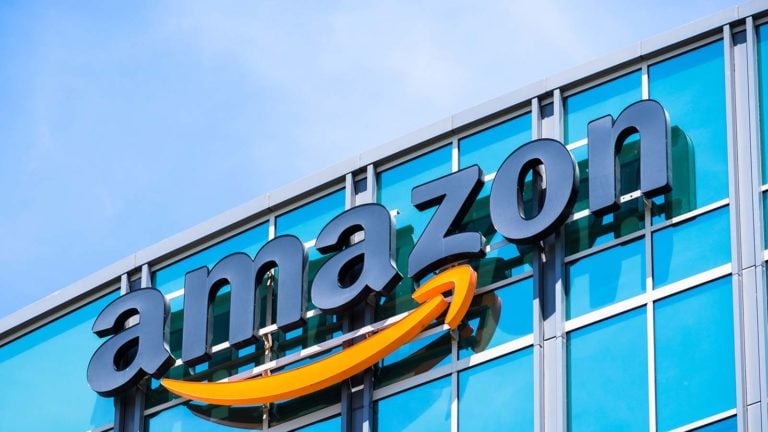Amazon’s (NASDAQ:AMZN) Prime Day sale runs July 16 and July 17 this year. The record haul it’s expected to bring in over the two-day haul will be another reason for investors to buy Amazon stock.
The company is expected to bring in $14.7 billion, 14% higher than last year’s event. However, despite the record sales, shoppers are expected to drive a hard bargain, not wanting to blow the budget.
“Even though inflation is going down, there is still a high amount of pressure on customers,” ModernRetail reported comments from Inès Durand, an e-commerce research leader at Similarweb. “For a large share of the population, they still want to leverage these deals in order to get more bang for their buck.”
So, consumers are still going to spend over the two-day sale, however, they will be focused on spending wisely.
Increasingly, the Prime Day event has had less of an impact on Amazon’s top and bottom lines. However, that doesn’t mean it’s going to stop having the annual sale.
Here’s why.
Prime Day Is a Great Way to Promote Its Online Business
In the past four quarters ended Q1 2024, Amazon’s online stores generated $235.5 billion. That means this year’s estimated haul of $14.7 billion will account for approximately 6.2% of its annualized sales.
So, in the big picture, Prime Day will not be the thing that pushes its stock higher.
This is because its e-commerce margins are tiny (it doesn’t break out the profit margins of its six businesses that are included in its North American and International segments) while its advertising, subscription, and third-party seller services revenues are thought to have good margins.
However, it’s an excellent way for e-commerce to promote its business when competition has heated up with Chinese e-commerce businesses such as Temu, Shein, TikTok Shop and AliExpress looking to take market share from the Seattle behemoth.
Amazon doesn’t have to make boatloads of money from its e-commerce business to be successful — its North American and International segments’ operating income was $12.2 billion in 2023; in 2022, it lost $10.5 billion — but it drives the entire Amazon ecosystem.
Without e-commerce sales, you don’t have the ad revenue, the Prime subscription revenue, or even some of the Amazon Web Services revenue. It would be a much smaller company were its e-commerce sales to go away.
Prime Day serves its purpose as a loss leader to get shoppers online who might normally not bother.
The Flywheel of Amazon’s E-Commerce Business
While investors have likely heard of the flywheel effect of its e-commerce business.
It started early on by focusing on providing good prices and excellent customer service, which created more customers, that enabled it to launch the Amazon Prime, and the virtuous continues adding to revenues. This approach also has resulted in the growth of AWS and advertising.
AWS was created in 2000 to help the e-commerce business scale faster. It took three years for the company to build the core infrastructure and systems to run it more efficiently. With the infrastructure in place, it decided to set up Merchant.com to help other retailers build online shopping sites.
“We expected all the teams internally from that point on to build in a decoupled, API-access fashion, and then all of the internal teams inside of Amazon expected to be able to consume their peer internal development team services in that way. So very quietly around 2000, we became a services company with really no fanfare,” TechCrunch reported Andy Jassy’s comments from 2016.
Jassy ran AWS from 2003 until being promoted to CEO in July 2021.
Amazon Continues to Turn Expenses Into Revenues
The same thing can be said about its ad business. It had revenue of $11.8 billion in Q1 2024, 24% higher year-over-year. Amaon created this revenue stream as a way to turn its expenses from buying Google search ads to revenue from its own ads for Amazon product searches.
Virtually every expense item on Amazon’s 2005 income statement had been turned into a revenue generator by 2015 according to a September 2023 blog post from Trung Phan, a well-known AI expert and the founder of Bearly.ai.
As Phan notes, the ad business could be even more profitable than AWS. Based on Google’s 68% margin for core search ad business, Amazon’s Q1 2024 profit would have been $8.02 billion, very close to AWS’ operating profit of $9.42 billion.
As Phan points out, Amazon’s first-party data is invaluable to third-party sellers.
“Amazon’s first-party transaction data is particularly valuable for 3rd-party merchants, which have grown from 3% of Amazon sales (2000) to 60% of its $300B+ retail sales (2022),” Phan wrote.
Prime Day still matters to the entire Amazon ecosystem.
On the date of publication, Will Ashworth did not have (either directly or indirectly) any positions in the securities mentioned in this article. The opinions expressed in this article are those of the writer, subject to the InvestorPlace.com Publishing Guidelines.
On the date of publication, the responsible editor did not have (either directly or indirectly) and positions in the securities mentioned in this article.

